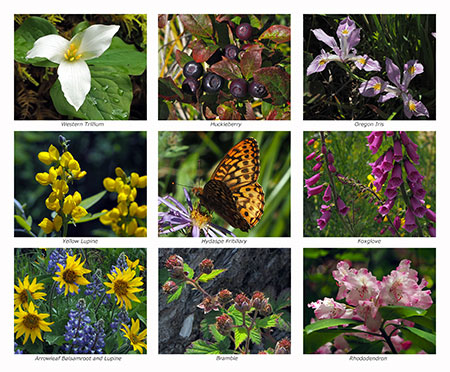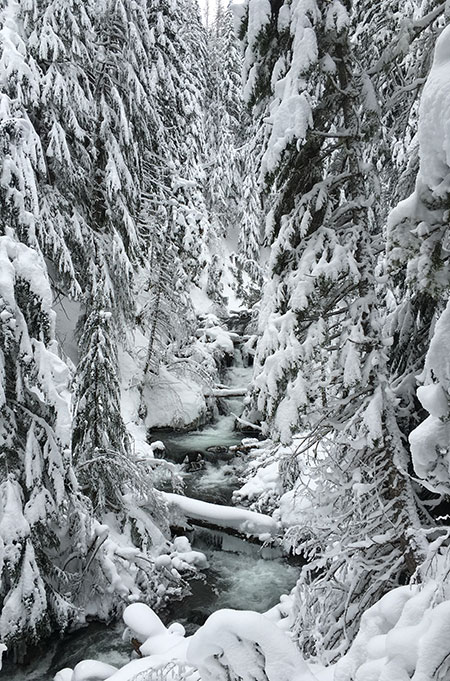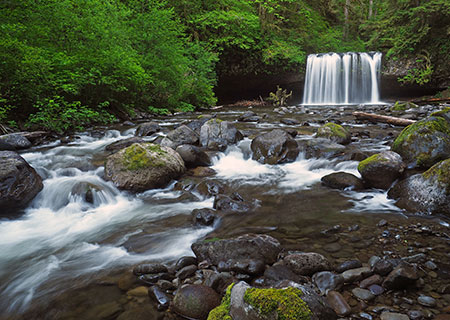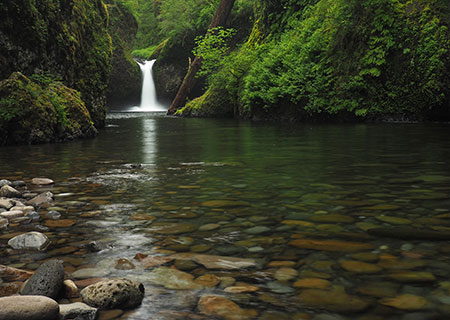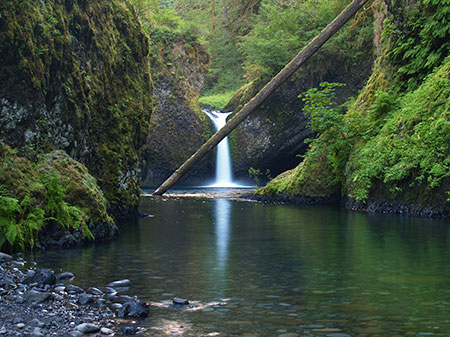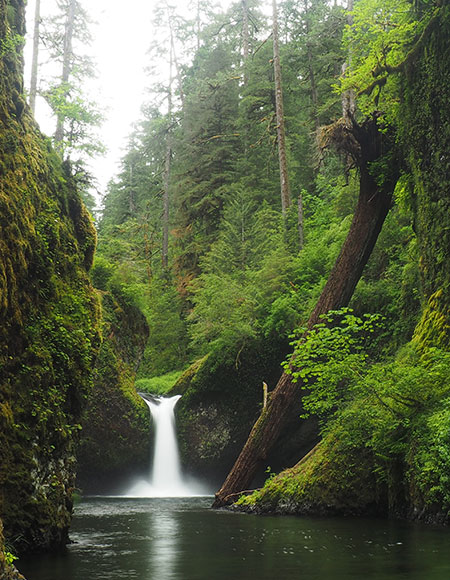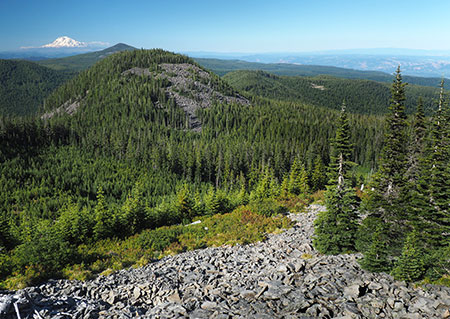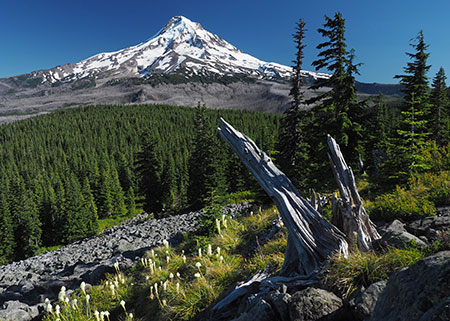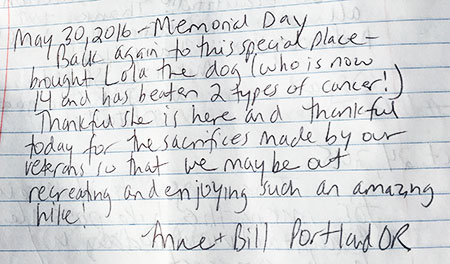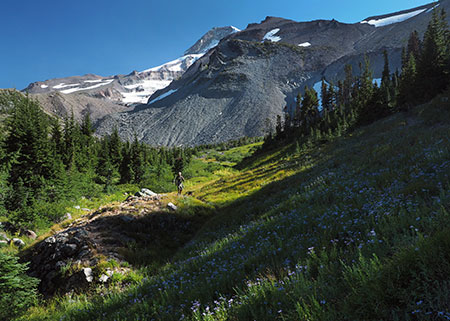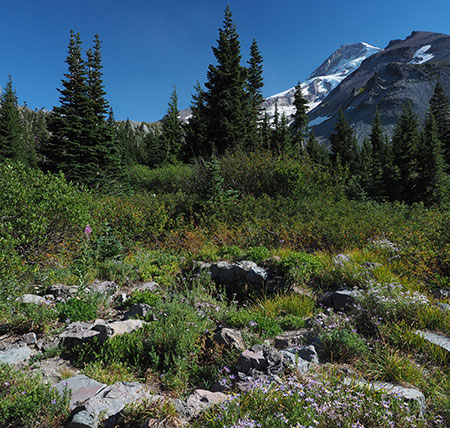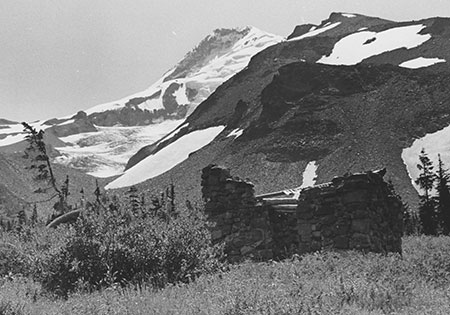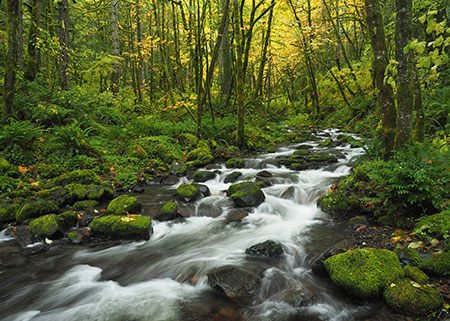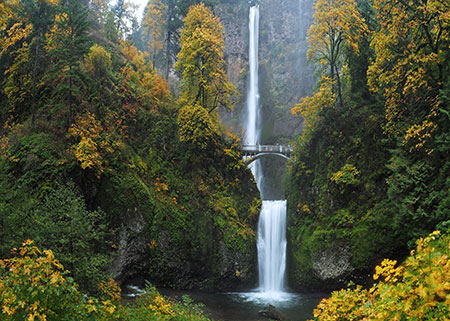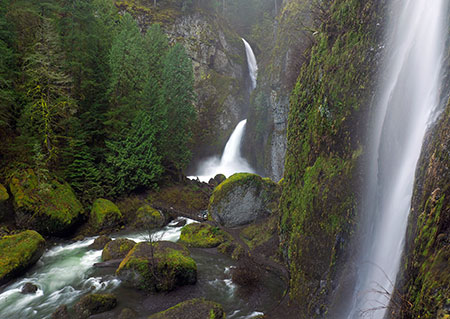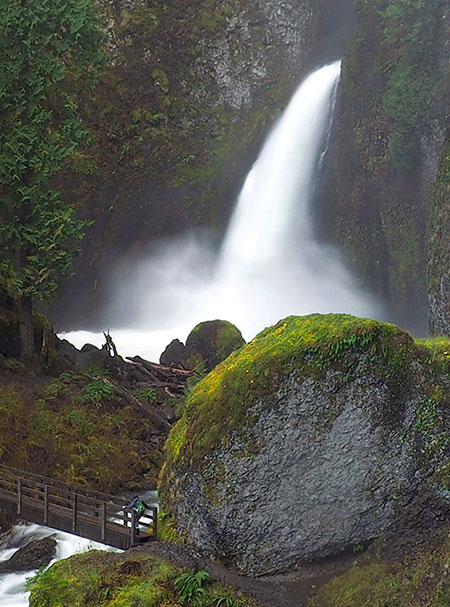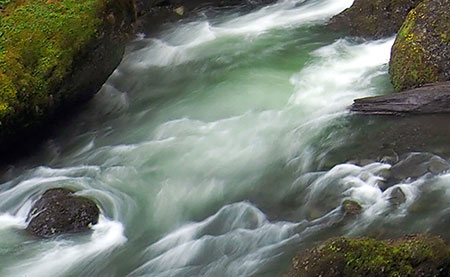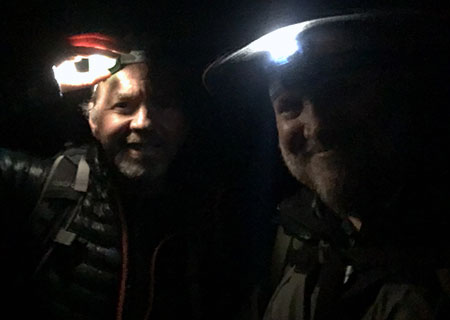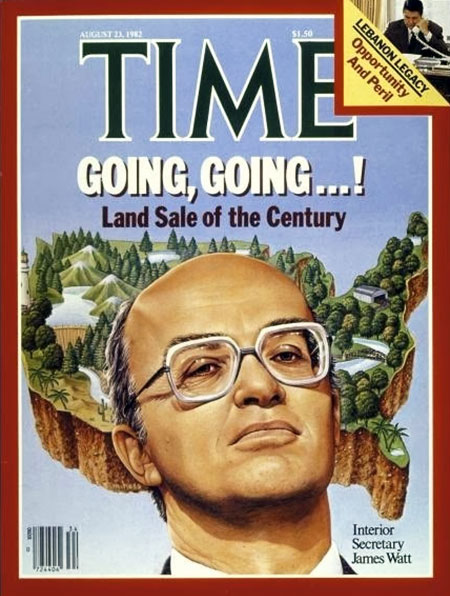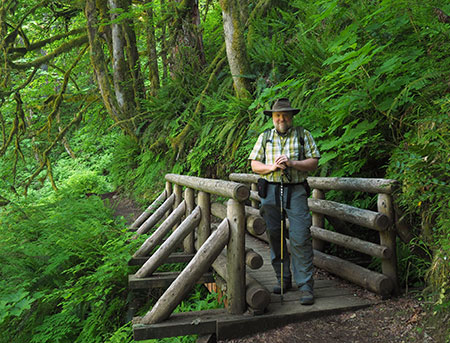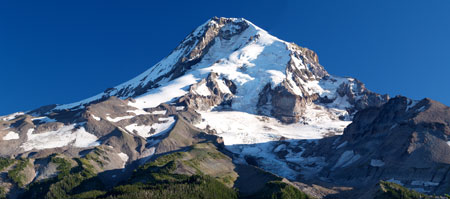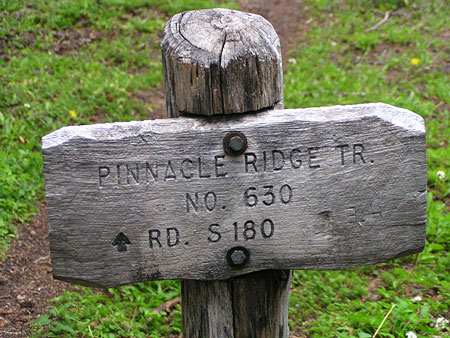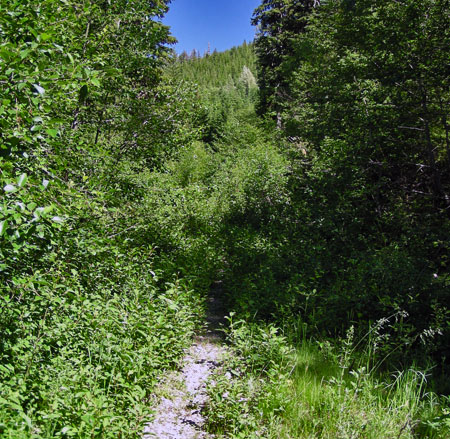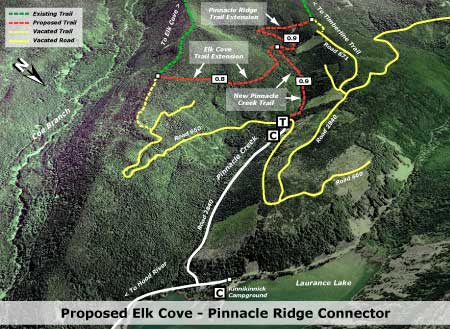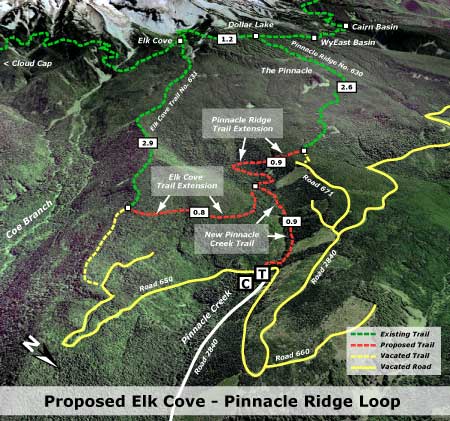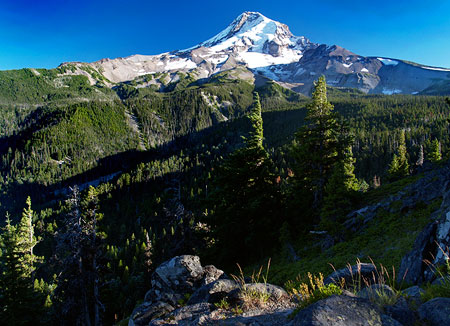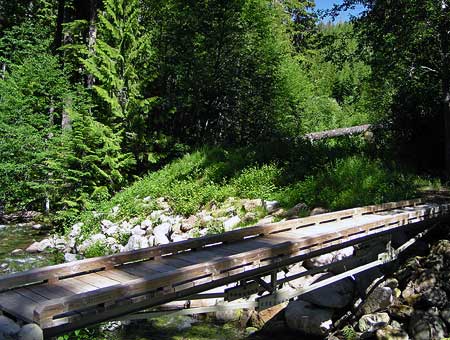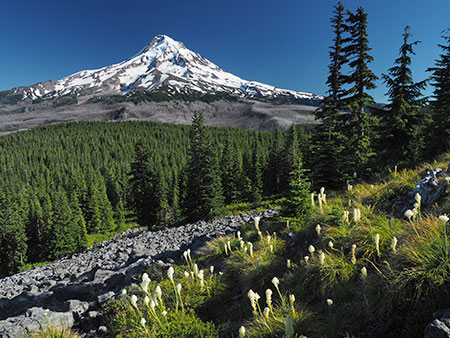
Mount Hood from Owl Point
Ten years ago, on September 22, 2007, Trailkeepers of Oregon (TKO) was borne out of an ad-hoc effort by a group of volunteers to save what is now known as the Old Vista Ridge Trail. On September 10 of this year, TKO will be celebrating our anniversary with (naturally!) a day of trailkeeping on the Old Vista Ridge Trail.
But this day will be a first for TKO, as we will have U.S. Forest Service officials on hand to formally re-dedicate the trail, bringing it out of the shadows and officially recognized are more than half a century. Of course, there will be some celebrating at Owl Point to wrap up the festivities, too!

(Click here for a larger map)
The Old Vista Ridge Trail is a true gem. It winds through subalpine forests past a string of dramatic views, sprawling talus slopes and tiny meadows before arriving at Owl Point, the star attraction along the old route. Owl Point offers an exquisite view of our favorite mountain, and from a unique perspective that is surprisingly uncommon, even to longtime Mount Hood lovers.

This sign once marked the start of the Old Vista Ridge Trail
Under a new agreement with the Forest Service, TKO will maintain the Old Vista Ridge Trail in perpetuity as part of bringing it back into the official USFS trail system. The first phase of this adoption agreement extends to Alki Point, one stop beyond Owl Point, where the big Washington volcanoes spread out on the northern horizon. In the future, TKO has plans to adopt the rest of the old trail to tiny Perry Lake, and also to build a new connector trail that will eventually make Owl Point a destination that can be reached from Laurance Lake, just a few miles from Parkdale.
Here’s a look back to how the Old Vista Ridge Trail came on to TKO’s radar, or more accurately, how this old trail inspired the volunteers who would come to form TKO.
Following a Faint Path in 2006

The author visiting with the incomparable Roberta Lowe!
The Old Vista Ridge story starts with epic field guide authors Don and Roberta Lowe. I can’t begin to describe the impact their classic books had on my life growing up in Oregon, and I was stunned when they answered a letter I wrote to them as a student way back in the 1980s, ans was working on a field guide project of my own.
Today, I’m happy to report that I meet with Roberta Lowe periodically for lunch, and I continue to embarrass her by bringing along stacks of their books for autographs every time we get together (I have dozens… sorry, Roberta!). One of their books holds the key to Old Vista Ridge. It’s this one:

This is the most collected of the Lowe’s many books
The Lowes published the now-coveted “50 Hikes” guide in the mid-1980s, and it was unique in that it contained several “lost trails” in Mount Hood country — old routes that hadn’t been maintained in years and were on the brink of becoming forever lost to neglect.
One of these lost gems was the Old Vista Ridge Trail. Don Lowe’s photo of Mount Hood from Red Hill, the off-trail cinder cone that was the main destination in their description of Old Vista Ridge stuck in my mind for two decades before I finally made the effort to explore this old route in 2006.
Red Hill can be seen from the Timberline Trail, and as I planned the hike from this high perspective in the summer of 2006, I also noticed a series of rocky outcrops and meadows near Red Hill, along the Old Vista Ridge Trail. Where these viewpoint accessible from the old trail, too?
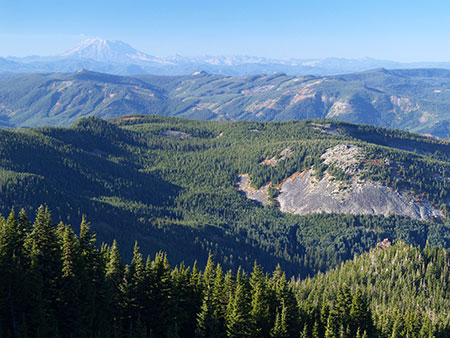
Looking toward Red Hill and Owl Point from the Timberline Trail (Mt. St. Helens on the horizon)
On October 6, 2006, hiking partner and fellow photographer Greg Lief joined me for a first trip along the Old Vista Ridge Trail. At first, the faint trail was encouraging: lots of downfall, but also sections that were completely intact after more than 40 years of neglect.
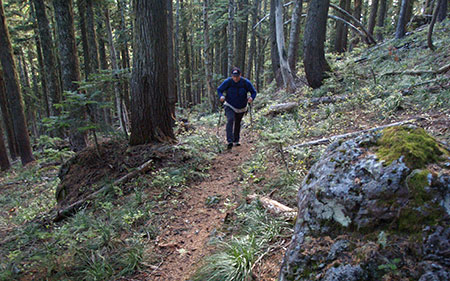
Greg Lief on the Old Vista Ridge Trail in 2006

Hundreds of logs blocked the trail in 2006
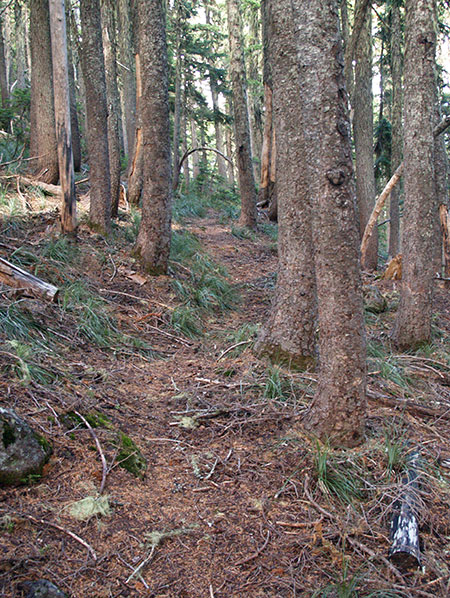
A few signs of maintenance, long ago – note the cut ends on the logs in the foreground
But as we pressed further from that “Trail Not Maintained” sign at the trailhead, conditions deteriorated rapidly. By the time the old trail crested the ridge top, we were wading through waist-deep thickets of huckleberries and mountain ash, and barely able to find the old tread.
We weren’t the only people visiting Old Vista Ridge, though. Plastic flagging periodically marked the route, especially where the going was most rough. Clearly, other folks cared about this old trail.
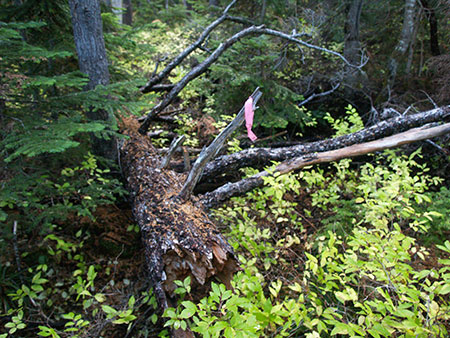
Yikes… rough going, here!
The string of viewpoints I had seen from above on the Timberline Trail, proved illusive once we were down in the forest. Eventually, we followed a game trail through a beautiful subalpine meadow and came to what I thought might be the main viewpoint — and a stunning view of Mount Hood emerging from autumn clouds in the late afternoon sun. After capturing this beautiful scene, we declared victory, and trudged back through two miles of brush and fallen trees to the trailhead.
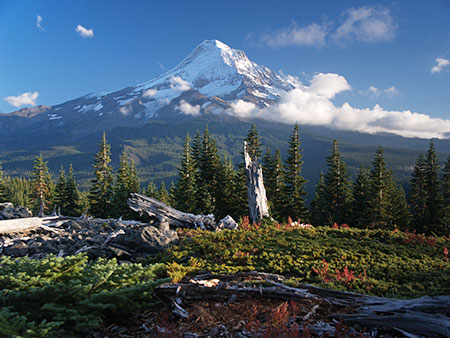
Our first look at the view from The Rockpile in October 2016
Once back at home, I realized that the viewpoint we had reached was not the one we were aiming for — the prominent outcrop I had seen from up on the Timberline Trail. Instead, it was a talus dome now known as The Rockpile, just a quarter mile or so from the main viewpoint. Time to return!
So, two weeks later, on October 22, Greg and I returned to fight our way back up the Old Vista Ridge Trail, this time certain we would find that most prominent viewpoint. But first, we pressed on to find the end of the Old Vista Ridge Trail, at tiny Perry Lake. It was more of a pond, but lovely, nonetheless. We also explored the remains of the old Red Hill Guard Station and fire lookout, near the lake.
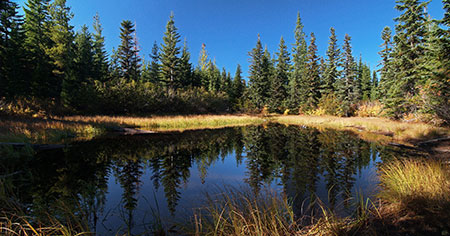
Tiny Perry Lake in October 2016
Next, we traced our steps back up the Old Vista Ridge Trail to another viewpoint we had passed along the way, a spot we now know as Alki Point that features a view looking north toward the Columbia River Gorge and the big Washington volcanoes.

The panoramic view from Alki Point in October 2016
As we stood admiring Alki Point and taking a few photos, we had an amazing stroke of luck: steam suddenly began billowing from Mount St. Helens! We stayed and watched the minor eruption, capturing these rare photos of the event:
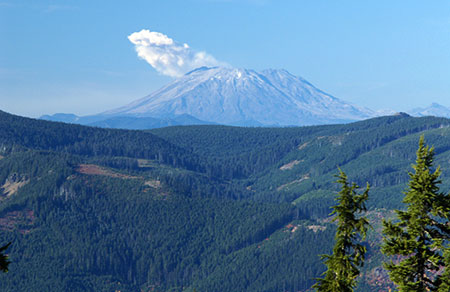
Mount St. Helens erupting on October 22, 2006

(Click here for a larger view)
The last order of business on that memorable October 22 trip was to find the main viewpoint that had stood out so prominently from the Timberline Trail.
We soon discovered that it was just off the main trail, and could be found by skirting above a series of talus slopes adjacent to the trail. As we approached the rugged, windswept viewpoint, a Great Horned Owl floated close overhead — and now Owl Point had a name!

Our stunning first look at Mount Hood from Owl Point in October 2006
Our first look at Owl Point was simply stunning, and far beyond what I had imagined when looking down on the area during that summer of 2006. The viewpoint was just far enough from the mountain to give remarkable perspective, but close enough that we felt we could reach out and touch it. It is simply one of the finest views of the mountain, anywhere.
Bringing Old Vista Ridge back in 2007
The beauty of Owl Point (and later, threats of a proposed dirt bike play park that would destroy the trail) stuck in my mind after those first trips in the fall of 2006, and by the summer of 2007 several folks on the fledgling Portland Hikers online forum (now OregonHikers.org) conspired to simply go and maintain this beautiful old trail. We really had no idea what we were doing, nor that we would be creating some hard feelings with the USFS that we would eventually have to reconcile in order to formally adopt the trail.
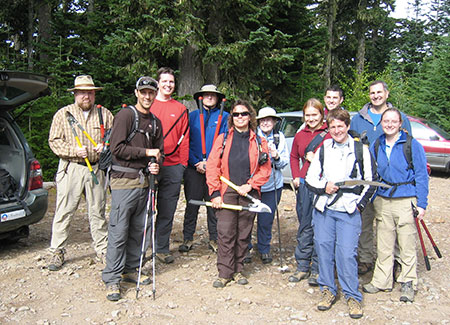
September 22, 2007 founding trip to Old Vista Ridge
The 2007 volunteer work included several ad hoc “clipper trips” by Portland Hikers forum members to clear brush, and dozens of logs were cleared by experienced chainsaw volunteers among our web community. Our most notable of these informal events came on September 22, 2007, when a group of volunteers met to take on the most unruly sections of brush along the old trail.
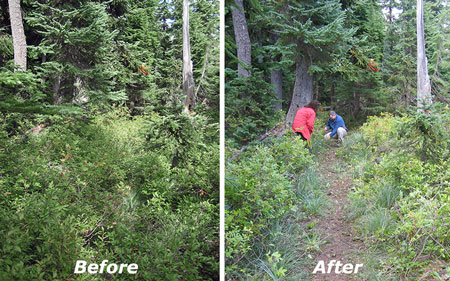
Volunteers made a big impact that day!

Sawing logs in 2007
The impact we made on that day particular inspired everyone, and on way down the mountain that evening, we talked about creating a service arm of the old Portland Hikers community. A few weeks later, we had formed what was originally known as the “Trails Association of Oregon”, though by early 2008 we had switched to Trailkeepers of Oregon (TKO). Soon, we had non-profit status, and the rest if history, as the saying goes!

Celebrating at Owl Point on September 22, 2007
If you haven’t guessed by now, I’ve been involved with TKO and its Oregon Hikers Forum and Field Guide from the beginning, so the grand re-opening of Old Vista Ridge is a pretty big thrill for me. In 2012, we posted a summit log at Owl Point, and there is nothing more rewarding than reading the inspired comments from hikers reconnecting with nature as they take in the view. Here are some samples from the past couple years:




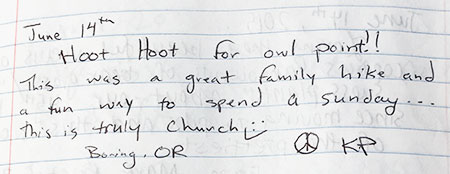
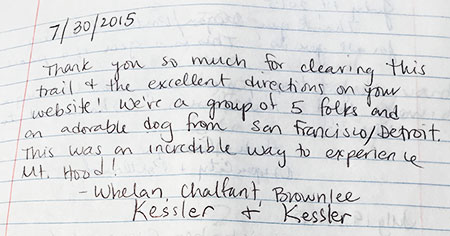


As we move forward under the new agreement, TKO will continue to care for this trail in partnership with the Forest Service. We have lots of work planned to improve the trail and make the experience even better, and I’ll periodically showcase that work here.
How to Join TKO at the September 10th Event
If you have never been part of a trail stewardship project, TKO’s September 10 event at Old Vista Ridge is a wonderful way to start. For the adventurous, we’ll have a couple crews using crosscut saws to clear logs — a very cool experience, if you’ve never done that before.
For the less adventurous, we’ll also have crews doing what we did way back in 2007: taking loppers to huckleberries and mountain ash along the trail. If you’ve pruned a hedge, then you can do this!

TKO volunteers in a recent project at Punchbowl Park, near Hood River
One of the best things about being part of a TKO crew is knowing that you’ve helped keep our trails around for future generations to enjoy. It’s a VERY satisfying feeling! It’s easy to RSVP for the event, but space is limited. Just go to this link and sign up online on the TKO website:
September 10 • Old Vista Ridge 10th Anniversary Project
We’ll have other fun events as part of this special stewardship project, including the trail dedication and a 10th Anniversary celebration at the end of the day.
As always, thanks for reading the WyEast Blog, and I hope you’ll consider joining us on September 10, too!
Addendum
Over the past week, TKO has been working closely with the U.S. Forest Service to monitor the Eagle Creek Fire in the Columbia River Gorge and the potential of the fire to move south. Based on an abundance of caution for the health and safety of the many volunteers who had registered for this event, TKO and the Forest Service have decided to postpone the September 10 Old Vista Ridge event until a later date. I’ll provide updates here on the blog, when available.
To respond to Buck’s comment (below), TKO will be also working with the Forest Service to assess the trail damage in the Gorge after the smoke clears, and will be working (likely for years) to restore the trails there. In the meantime, TKO has set up a dedicated e-mail list that you can join to receive periodic updates on that effort and opportunities to help:
TKO Response to the Eagle Creek Fire & Special E-mail List
Thanks for asking, Buck!

